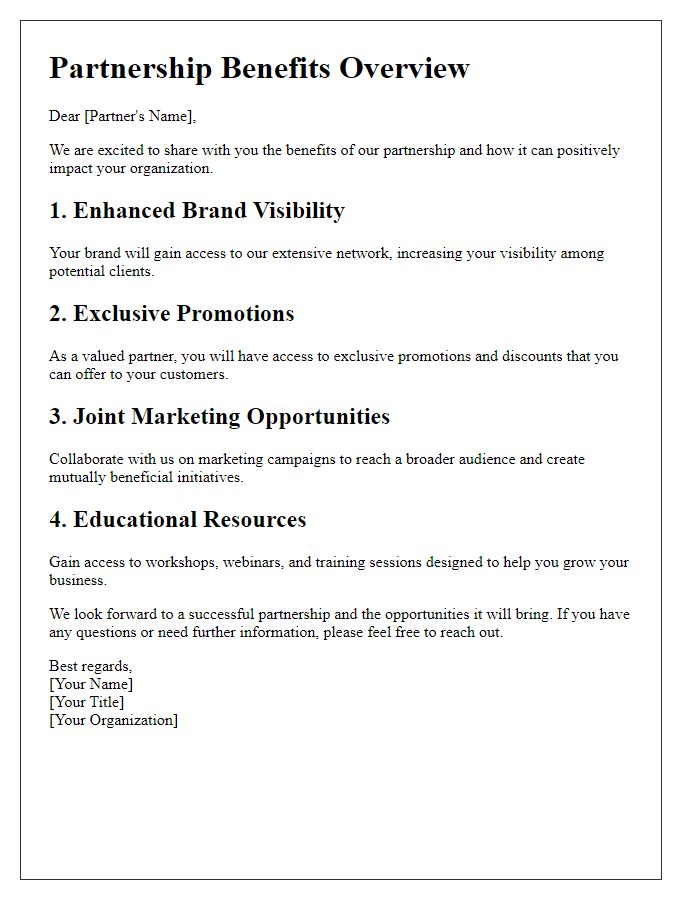Are you looking to craft the perfect letter to showcase the benefits of sponsorship? Whether you're reaching out to potential sponsors or creating a template for your organization, knowing what to include is essential. In this article, we'll break down the key elements that will make your sponsorship letter stand out and effectively communicate the value of partnering with you. Join us as we delve into the specifics and help you create a compelling case for sponsorship!

Sponsorship Levels and Tiers
Sponsorship programs provide various levels and tiers that offer differing benefits to businesses and organizations. Each level, such as Gold, Silver, and Bronze, presents unique opportunities for visibility, engagement, and networking. Gold sponsors, for example, often receive prominent logo placement on event materials, including banners and brochures, ensuring maximum exposure during major events, such as conferences or festivals with thousands of attendees. Silver sponsors might enjoy mid-tier benefits, including shared booth space in high-traffic areas, advantageous for direct interaction with potential customers. Bronze sponsors generally receive basic recognition, such as their logo displayed on the event website, enhancing their brand presence within the community. Additionally, specific metrics like social media mentions, newsletter features, or exclusive access to VIP events can vary across tiers, providing tailored advantages for participating sponsors.
Branding and Visibility Opportunities
Branding and visibility opportunities at sponsored events can significantly enhance a company's reach and recognition among target audiences. Significant platforms include trade shows, like the Consumer Electronics Show (CES) in Las Vegas, which attracts over 170,000 attendees. Sponsorship can provide prominent logo placements on banners, brochures, and digital screens, ensuring visibility among industry leaders and potential clients. Additionally, sponsoring keynote sessions or workshops can offer direct engagement with attendees, enabling brand positioning as a thought leader. Social media promotions and event-specific hashtags further amplify brand presence, potentially reaching millions online. Collaborations with influencers or speakers can also create authentic connections, driving further awareness and interest in the brand's products or services.
Audience Demographics and Reach
The audience demographics for the upcoming marketing campaign reflect a diverse population, primarily targeting individuals aged 18 to 35, representing a significant segment of digitally savvy consumers. The campaign aims to reach approximately 500,000 potential customers across various platforms, including social media outlets like Instagram and TikTok, where engagement rates exceed 3% among this demographic. Additionally, the event will take place in New York City, a major cultural hub with a population of over 8 million, providing extensive local visibility. The diverse cultural backgrounds in NYC further enhance the campaign's appeal, making it attractive to brands seeking to connect with a varied audience.
Exclusive Access and Networking Opportunities
Exclusive access to high-profile events, such as annual industry conferences or summits, offers sponsors privileged opportunities to connect with leaders and influencers. Networking opportunities enable interaction with key decision-makers and other sponsors, fostering valuable relationships that can lead to partnerships. Premium seating and VIP access at these events enhance visibility, allowing sponsors to showcase their brand in prominent settings. Invitations to exclusive dinners or meet-and-greet sessions with industry experts create personal connections that may not be possible in larger, general attendance events. Additionally, online platforms for virtual events strengthen interactions, ensuring brands reach a wider audience while maintaining an intimate networking environment.
ROI and Impact Measurement Techniques
Sponsorship benefits can significantly enhance brand visibility and engagement. Return on Investment (ROI) measures such as increased sales, website traffic, and social media interactions provide quantifiable data reflecting sponsorship effectiveness. Impact measurement techniques include pre-event surveys (gauging audience perceptions and expectations), post-event analysis (measuring how sponsorship influenced participants), and specific metrics tracking (monitoring key performance indicators like lead generation). Events like charity runs (encouraging community participation) or conferences (showcasing industry leadership) serve as platforms to assess brand alignment and audience reception, ultimately driving strategic insights for future investments.













Comments